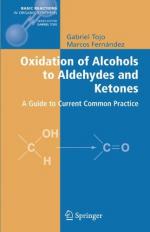|
This section contains 922 words (approx. 4 pages at 300 words per page) |

|
Aldehydes are a class of highly reactive organic chemical compounds that contain a carbonyl group (in which a carbon atom is double-bonded to an oxygen atom) and at least one hydrogen atom bound to the alpha carbon (the central carbon atom in the carbonyl group). The aldehydes are similar to the ketones, which also contain a carbonyl group. In the aldehydes, however, the carbonyl group is attached to the end of a chain of carbon atoms, which is not the case with the ketones. The name aldehyde was given to this group of compounds in the nineteenth century by German chemist Justus von Liebig (1803-1873) and was taken from a mock Latin phrase, alcohol dehydrogenatus, describing their preparation. (The first aldehyde was prepared by removing two hydrogen atoms (dehydrogenation) from ethanol.) The general formula for an aldehyde is RCHO, with R representing an alkyl group.
The names of...
|
This section contains 922 words (approx. 4 pages at 300 words per page) |

|


